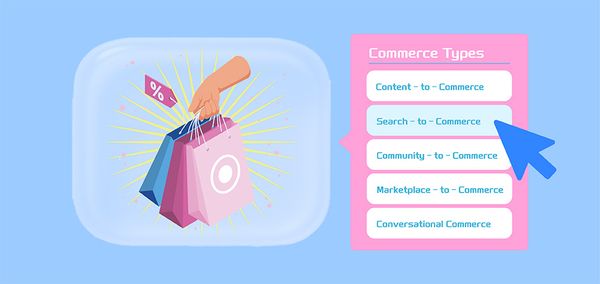eCommerce Analytics 101: How to Use Data to Drive More Sales for Your Online Store

In eCommerce, your consumers hold the utmost power as they are armed with reliable product reviews from their peers, the ability to compare costs among internet retailers swiftly, and the chance to make purchasing decisions.
Since customers have high expectations; therefore you need to provide them with the finest online shopping experience you can in order to convince them to buy from you. Whatever the way you slice it, data is the only thing that will help you do it correctly; this is where eCommerce analytics come into play.
What Does eCommerce Analytics Mean
Ecommerce analytics is the procedure of collecting data from all sources that influence your online store and utilising it to get an idea of customer patterns and behaviour shifts in order to create data-driven decisions that will drive more sales for your online store.
Analytics for online stores encompass measures of the whole customer experience, from discovery to acquisition to conversion to, eventually, retention and advocacy.
Top 8 Advantages of e-Commerce Analytics
Nowadays, customers are becoming more vigilant and have started making informed decisions. Before deciding to click the add to cart button, customers tend to conduct product research, pricing comparison, review reading, and evaluate unique experience searchers.
You'll be able to keep one step ahead of the game if you can comprehend their behaviour. Here, we have narrowed down the nine advantages of using eCommerce analytics:
1. Development of Data-driven Product
Customers now have more choices and control than ever. High expectations result from the abundance of options, and businesses will need to dramatically improve their skills to keep up with consumers' rising expectations. Making a product that customers will enjoy requires having proof of consumers' preferences and capitalising on that information during the product development process.
2. Optimal Inventory Control
How effectively you manage your online store's inventory will determine how long it remains open. The best inventory control will save you a lot of headaches around order fulfilment. In addition, eCommerce analytics may assist you in planning and forecasting your inventory for the following period.
3. Cross-sell and Up-sell to Existing Clients
Businesses frequently underrate the effectiveness of cross-selling and up-selling to clients. According to Forbes, acquiring a new client might cost up to five times as much as keeping an old one. Additionally, since current customers account for 65% of a company's revenue, integrating ecommerce data for a retargeting campaign might be a gold mine.
4. Collect User Behaviour Data
You must keep up with your customers' quickly shifting preferences and expectations. The easiest method to achieve this is to gather data on user behaviour and become familiar with their demands, preferences, and pain points. Also, keeping your customers' expectations first will benefit you in staying relevant.
5. Personalised Shopping Experience
No one size fits all in e-Commerce. According to research, 90% of customers have found personalisation features appealing, and 80% of consumers say they are more likely to purchase when businesses offer a tailored experience.
| Get Started Now to Grow Your Online Business with the Best AliExpress Dropshipping Tool - DSers! |
However, personalisation means much more than customising assortments in this new world. With the use of ecommerce analytics, you will be able to anticipate each customer's wants and offer pertinent product recommendations.
6. Engaging User Experience
To keep consumers engaged, you must provide an interesting user experience in addition to competitive pricing and cutting-edge quality. By looking at the data, you can determine how long visitors stay on your website and which elements most appeal to them. Then, pay close attention to how you may make the user experience more motivating, thrilling, straightforward, and frictionless to serve consumers' ever-changing needs better.
7. Optimised Product Portfolio
There are "zeroes" and "heroes" in any product portfolio, which is absolutely fine, but what is not fine is ignoring that truth. You need to analyse the data to evaluate which of your goods are bestsellers and which ones don't. You may always dig deeper to get the exact reason why some goods remain on your virtual shelf indefinitely and then use the information you learn to optimise your product selection.
8. Maximise Return on Investment for Advertising (ROAS)
You may determine whether you have a leaky bucket and what more you can do to maximise ad spend by using ecommerce analytics. You may focus on the proper adverts for the ideal target demographic rather than waste money on ineffective advertisements.
Best Practises for e-Commerce Analytics
Data analytics plays an increasingly crucial role in the ecommerce ecosystem. Here are five excellent practices to follow in order to grow your online sales while focusing on the things that matter.
1. Gather Scattered Marketing data Across Channels and Platforms
Having your data dispersed over so many platforms and channels might be overwhelming. For example, your paid ad data is spread across Facebook, Google Ads, Taboola, and Outbrain. Your Google Analytics Enhanced Ecommerce data, customer relationship management platforms, email providers, and a tonne of other data are also available. Your sales data may be stored in Shopify, Magento, or any other e-commerce platform. Copy/paste all that information from several CSV files or local analytics tools might be a genuine nightmare.
The good news is that consolidating all this data can be done more wisely and quickly, saving time. Thanks to pre-built data connections, you can import data into Google Sheets, Excel, or Google Data Studio straight from any source. You may then invest your hours in analysing your marketing data rather than focusing on integrating data and switching between platforms and reports.
You will be able to break down data silos and increase productivity, efficiency, and company agility with the help of smart ecommerce analytics tracking.
2. Understand the Statistics and the Clients
It is just a waste of time and inefficient to gather data only for the sake of having it. You ought to be able to interpret the statistics using the lens of customer behaviour. Although marketing solutions provide a wealth of data, they are not designed for cross-channel reporting. Nevertheless, when you analyse facts in isolation, you are unable to comprehend the overall picture and are more prone to error and choose the wrong course of action. As your marketing stack expands, having all of your data in one location can help you understand user behaviour and identify potential improvement areas.
3. Have Actionable Timing
eCommerce success is primarily dependent on prompt actions. You may respond appropriately by utilising rule-based alerts to notify you when a particular product, category, or campaign is succeeding or when inventory is getting low. Consequently, you'll be able to build on what's working and stop running any ads that aren't giving you the desired outcomes. You'll be able to take action at the appropriate moment thanks to personalised notifications delivered right to your email.
4. Automate eCommerce Dashboards
When all the data is ready, you need to focus on automation. For example, you may arrange your reports to update automatically rather than manually fetching them, allowing you to concentrate on data analysis and giving customers value. In addition to saving you time and effort, automation reduces the possibility of errors. This will assist you in developing a data-driven culture where you spend more time on analysis and insights and reduce reporting time.
5. Share Analytics to Facilitate Communication between Team Members
Making informed decisions requires streamlined and efficient communication throughout the organisation. However, with all the platforms companies use nowadays, sharing data with team members is challenging. Therefore, having consolidated data that is simple to grasp and distribute throughout the team will pay off in the long term because sharing knowledge across departments is the cornerstone of your online business success.
Bottom Line
eCommerce analytics must be used throughout the customer lifecycle to create a competitive customer experience. These insights help you by providing optimised consumer experiences in the areas of discovery, acquisition, conversion, retention, and advocacy.













 Company
Company
 Why Choose DSers
Why Choose DSers
 Blog
Blog
 Help Center
Help Center




 Live Chat
Live Chat